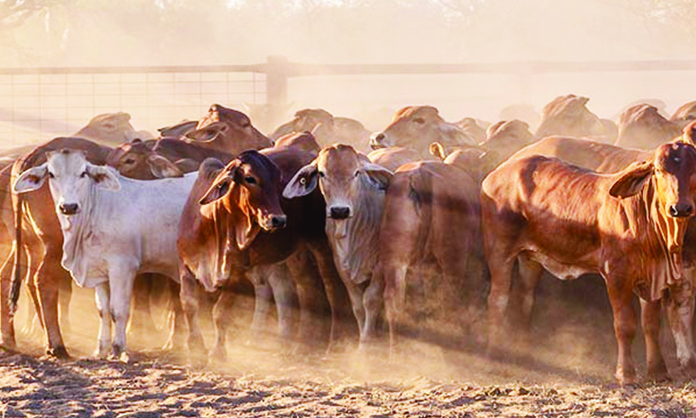The total number of cattle marketed in the country increased by 49% to 22 052 in March 2023 compared to 14 848 in the prior month.
According to Agribank’s monthly market watch for April, the upsurge is noted across all cattle marketing activities, with a triple-digit growth of 103% to 8 142 observed in live exports.
“The inconsistent rainfall, which resulted in vegetation degradation between March to April 2023, has prompted farmers to sell some of their livestock to avoid stock losses to drought,” said Agribank.
According to Meat Board of Namibia, the number of live exports and slaughter cattle are expected to continue on an upward trajectory, which could further lead to declining livestock prices.
Farmers are reducing their herd size, conserving resources, and generating income to help offset the costs of managing their livestock during the upcoming dry season, Agribank added.
The bank’s report added that the number of sheep marketed increased by 91% to 90 380 from 47 397 in the prior month. The upsurge is attributed to live sheep exports to South Africa that surged by 95% to 48 700 in March 2023, up from 24 970 in the prior month.
However, the report says goat marketing continues to decline, slightly reducing to 3 638 in March 2023 from 3 682 in the prior month.
The reason for slower goat marketing is that goats are drought resistant animals; they are browsers; thus do not depend on grasslands for feeding, making farmers reluctant to sell.
“We observed a decrease in the price for livestock in line with the increasing supply in the month of March 2023, which is in line with the demand/supply and price relations,” said the bank.
The report added that the poultry market remains fragile to bird flu outbreaks across the major trading nations.
During March 2023, Namibia banned imports of poultry products from Chile and Argentina as a result of a bird flu outbreak.
“This was an opportunity to local poultry farmers to enhance and intensify local production to make up for the drop in international supply,” said the Agribank report.
Meanwhile the Namibian Agronomic Board continues to prioritize local uptake of produce through import/border restrictions.
This does not only benefit local producers from selling their produce but also to identify the need for other horticulture produce that is in little supply, to diversify their farming operations.
The April-August 2023 vegetable production forecast report, indicates the special controlled products in surplus and shortage for the forecasted period.
Butternut and pumpkins were in surplus from 01 to 30 April 2023, while gem squashes, onions and potatoes were in shortage in April 2023.
Potatoes remain a highly demanded produce and farmers should be encouraged to grow more local potatoes to meet the local demand.
– email: matthew@namibian.com.na
Stay informed with The Namibian – your source for credible journalism. Get in-depth reporting and opinions for
only N$85 a month. Invest in journalism, invest in democracy –
Subscribe Now!






